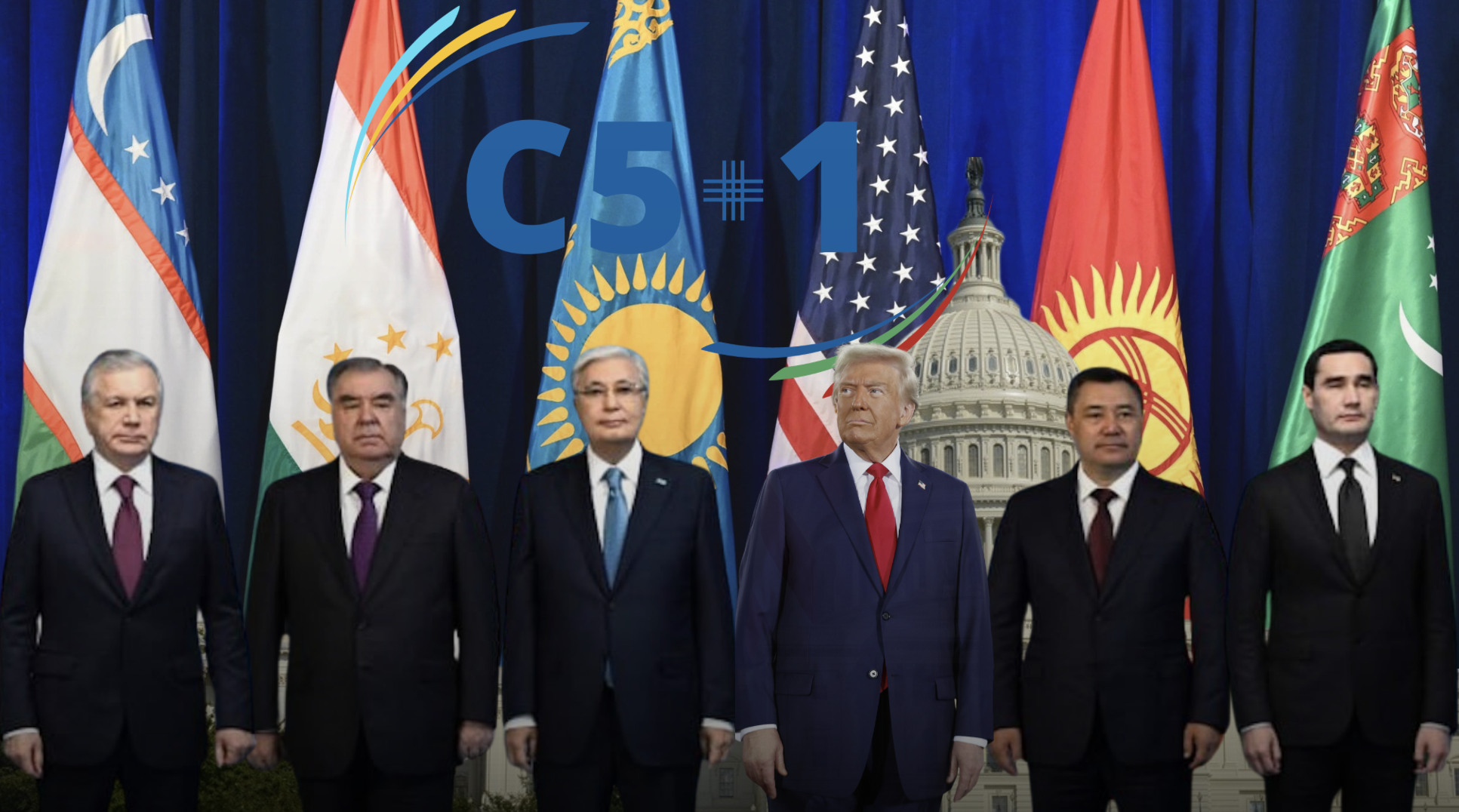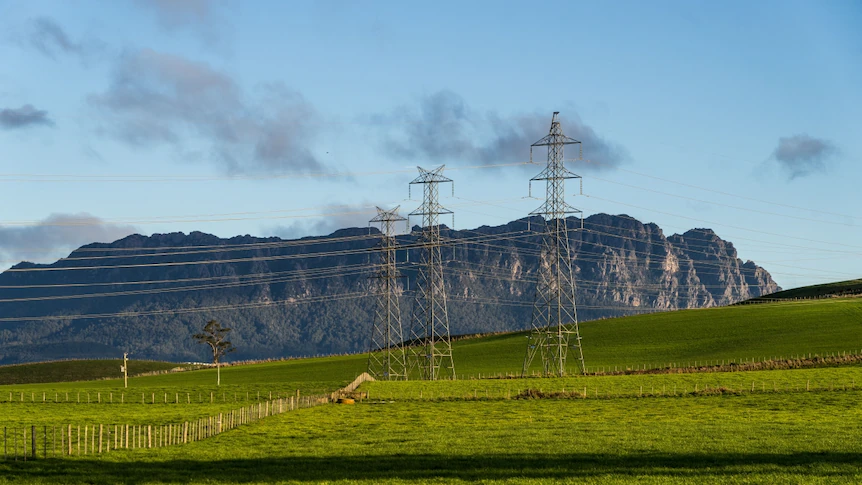Copyright astanatimes

ASTANA – Central Asian leaders are set to gather in Washington on Nov. 6 for a C5+1 summit with President Donald Trump, marking 10 years of U.S. engagement with the region through this platform. The summit, the second at the presidential level since the format was launched in 2015, is expected to focus on security cooperation, supply chains, energy and digital technology, according to officials. It comes as the U.S. seeks to deepen ties with the region and as Central Asian governments pursue diversified partnerships. The C5+1 format with the U.S. was launched in 2015, following a format similar to the one the region has used with other countries. The platform has significantly expanded high-level engagement, bringing together ministers, experts, and working groups focused on the economy, energy and the environment, and security. The platform expanded in 2022 with a new permanent secretariat. In 2023, then-President Joe Biden hosted the first C5+1 presidential summit in New York on the sidelines of the UN General Assembly. Beyond the leaders-level summit, the program is expected to feature bilateral meetings and the C5+1 Tenth Anniversary Business Conference, all aimed at enhancing economic cooperation between the U.S. and Central Asia. Key topics are expected to include transport corridors and supply chains, energy and critical minerals, digitalization and artificial intelligence, and business-to-business cooperation. Tokayev’s visit to Washington comes just a week after he met with U.S. Special Envoy for South and Central Asia Sergio Gor and First Deputy Secretary of State Christopher Landau in Astana. After Kazakhstan, Gor and Landau traveled to Uzbekistan. In both countries, they discussed a “wide range of economic and security issues,” according to the State Department press statement. The back-to-back diplomatic activity reflects a growing U.S. effort to engage Central Asia directly, as governments in the region seek to diversify economic partnerships and secure investment for transport links, energy transition and critical minerals development. Bilateral trade dynamics Kazakhstan hopes the meeting will give a significant boost to trade, economic, and investment ties with the U.S. Figures indicate that around 97% of Central Asia’s exports to the U.S. come from Kazakhstan. According to the Kazakh Ministry of Trade and Integration, bilateral trade hit $4.2 billion in 2024, up 4.1% from the previous year. Kazakhstan’s exports to the U.S. increased 30.7% to $2 billion. Imports totaled $2.2 billion, down 11.7%. Crude oil accounts for 56.1% of exports. Other key export commodities to the U.S. include uranium, silver, ferroalloys, tantalum and tantalum products, hydrogen, inert gases, among other nonmetals. Export growth was driven by increases in crude oil (+30% to $1.1 billion), uranium (+3.8 times to $322.8 million), silver (+2 times to $239.9 million), optical components (+16.5 times to $4.1 million), mixed mineral fertilizers (+$3.2 million), and nitrogen fertilizers (+$2.4 million). Key imports include passenger cars, turbojet and turboprop engines, aircraft, packaged pharmaceutical products for retail sale, vaccines, blood sera and blood, poultry meat and edible poultry by-products, among others. In the first eight months, Kazakh-American trade reached $2.1 billion, down 25.8% compared to the same period last year ($2.8 billion). Kazakhstan’s exports to the U.S. declined 45.3% over the same period, amounting to $696 million, driven by the decreases in crude oil and ferroalloy exports. Imports to Kazakhstan from the U.S. totaled $1.4 billion, down 9.6% compared to the same period last year. Kazakhstan’s perspective According to Alisher Tastenov, chief expert at the Department of Asian Studies at the Kazakhstan Institute for Strategic Studies under the President of Kazakhstan (KazISS), the recent visit of U.S. officials to Kazakhstan reaffirms the country’s commitment to advancing cooperation. “The Trump administration also views the C5+1 as an important mechanism for regional cooperation. Following recent talks between Kazakhstan’s Foreign Minister Yermek Kosherbayev and U.S. Deputy Secretary of State Christopher Landau, the U.S. side reaffirmed its readiness to expand cooperation with Kazakhstan in the security sphere, advance joint commercial projects and strengthen collaboration in the technology sector and in critical minerals,” said Tastenov. He sees Washington’s growing regional engagement as opening the door for Kazakhstan to secure new investment, diversify partners, and gain access to advanced technologies. “The upcoming summit in Washington is expected to mark an important stage in the development of the C5+1 dialogue and give it a more strategic direction. The agenda is expected to include strengthening economic cooperation, advancing energy partnership, and expanding digital and transport connectivity,” said Tastenov. “Particular focus will be placed on joint projects in green energy, the extraction and processing of critical minerals, and creating favorable conditions for U.S. investment in Central Asia’s infrastructure and innovation sectors,” he added. ‘Fortuitous’ timing The timing of this year’s C5+1 summit is fortuitous, said Darren Spinck, managing director at the Janus Forum, a U.S.-based think tank specializing in economic connectivity and supply chain resilience. He expects economic cooperation to be the focal point of U.S.–Central Asia engagement, resulting in “U.S.-led investment in infrastructure, mining, and resource development.” “It aligns with the Trump Administration’s increasingly aligned priorities: the elevation of the Trans-Caspian region, the diversification of U.S. supply chains and transport corridors, American de-risking from strategic sectors tied to the PRC, and the forthcoming National Security Strategy’s anticipated focus on hemispheric defense. All of these priorities converge on one essential requirement: ensuring a stable, diversified flow of rare earths and critical minerals essential to sustaining North America’s technology and defense industrial bases,” Spinck told The Astana Times. According to the American expert, Kazakhstan is one of the two important partners for Washington in the Trans-Caspian region, along with Azerbaijan. “The administration’s strategic interest in modernizing Kazakhstan’s national railway network, demonstrated by Kazakhstan’s recent $4.2 billion purchase of U.S.-manufactured Wabtec locomotives, illustrates how resilient overland infrastructure is as critical as mineral access. Avoiding over-dependence on the China–Kyrgyzstan–Uzbekistan line will be vital to secure upstream mineral exports via the Port of Aktau, across the Caspian to Baku, and onward through the South Caucasus into Europe for midstream processing and downstream manufacturing in the West,” Spinck explained. While turning that vision into reality will take coordinated effort across U.S. agencies from the White House and State Department to the Pentagon and development finance bodies, Spinck cautions against reducing Central Asia’s role merely to a source of raw materials “Yet America must avoid treating Central Asia as a resource extraction zone [i.e., a strip mining operation] to be exploited and forgotten. The Trump Administration’s commitment to long-term cooperation in AI, advanced technology, and educational partnerships signals a more sustainable, mutually beneficial model,” he said. Looking ahead, Spinck underscored that the Trans-Caspian region extends beyond Central Asia. He suggests U.S. officials could explore widening the C5+1 platform to include Azerbaijan, Armenia and Georgia, creating a “C5+3” structure that brings the South Caucasus into the same cooperation framework. “Linking the emerging TRIPP customs system from the Caucasus to Central Asia would solidify a unified economic corridor stretching from Kazakhstan to Turkey, reinforcing enduring U.S. cooperation across Eurasia,” he added. Critical minerals play a critical role Experts highlight that critical minerals will be central to the discussions in Washington. Kazakhstan holds some of the world’s largest reserves of rare and industrial metals vital to clean energy, defense, and advanced manufacturing, yet its full potential remains largely untapped. “Central Asia holds at least 25 of the 54 minerals identified by the U.S. government as ‘critical,’ and vast quantities of many of them: 39% of global manganese, 30% of chromium, 20% of lead, 13% of zinc, and 9% of titanium. Kazakhstan alone produces 43% of the world’s uranium,” writes Edward Lemon, a research assistant professor at the Bush School of Government and Public Service, Texas A&M University, for The Hill. Critical minerals advanced to the forefront of the Trump administration’s foreign-policy agenda, following executive orders and new cooperation deals with countries such as Ukraine, Malaysia and Thailand. The goal, Lemon noted, is to reduce reliance on China, which dominates the global supply chain. Central Asian countries could, as Lemon put it, “break this chokehold.” “Resource-rich, strategically located, and increasingly interested in diversifying economic partners, the region represents a rare ‘win-win’ opportunity. Biden’s 2023 launch of a critical minerals dialogue laid the foundation, and deals are already underway. Traxys, a U.S.-based commodities firm, recently signed a $1 billion agreement with Uzbekistan to explore and develop its critical minerals sector,” writes Lemon. Commercial deals But critical minerals are only part of the story. Central Asian governments have also recalibrated their diplomacy to align with Washington’s evolving priorities, which put commercial interests front and center. “The most effective approach to the current U.S. administration, however, is talk of money. Trump makes no secret of his mercantilist approach to foreign policy; he even boasts of it,” writes Temur Umarov, a fellow at the Carnegie Russia Eurasia Center. “It might seem that Central Asia could simply resign itself to its geographical fate and stick to maneuvering between China and Russia—especially since the United States is now abdicating its responsibilities as the world’s leading power. But the current U.S. administration is the easiest one so far for Central Asia to work with. Business interests can be used to attract Washington’s attention, and there is no longer any need for demonstrative distancing from Russia or commitment to democratic reforms,” Umarov explains. For Central Asian governments, commercial deals are only part of the picture. The larger objective is to reinforce their multi-vector foreign policy. Umarov, whose research focuses on Central Asian countries’ domestic and foreign policies, argues that without U.S. involvement, this policy loses balance, as only Washington can counterbalance both Moscow and Beijing. “Strengthening the multi-vector approach is especially important at a time when Russian-Chinese cooperation is breaking records. Central Asia is overall not opposed to their rapprochement, but being caught between the two powers is not a comfortable position, especially when they coordinate their actions in the region without involving the countries located there,” he writes. No sitting U.S. president has ever set foot in Central Asia. Trump brings the region back to Washington. Whether he will be the one to make the historic trip to Central Asia remains an open question.



